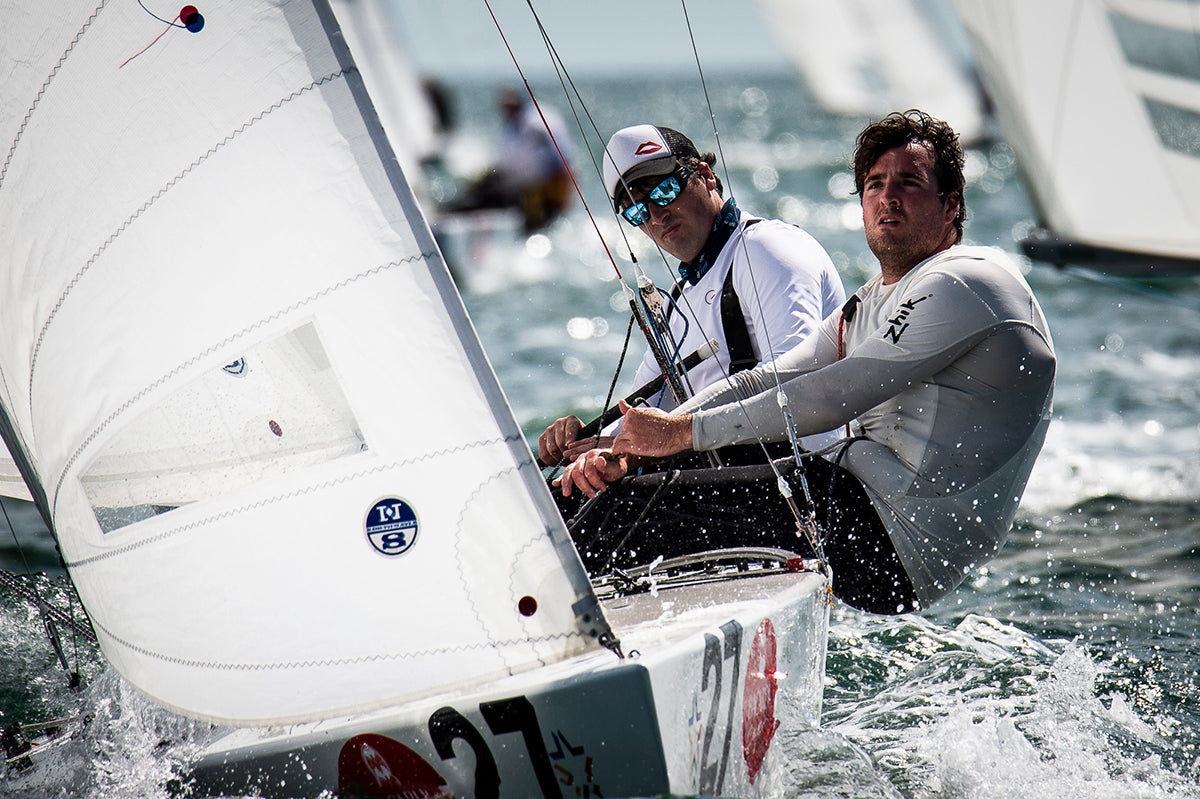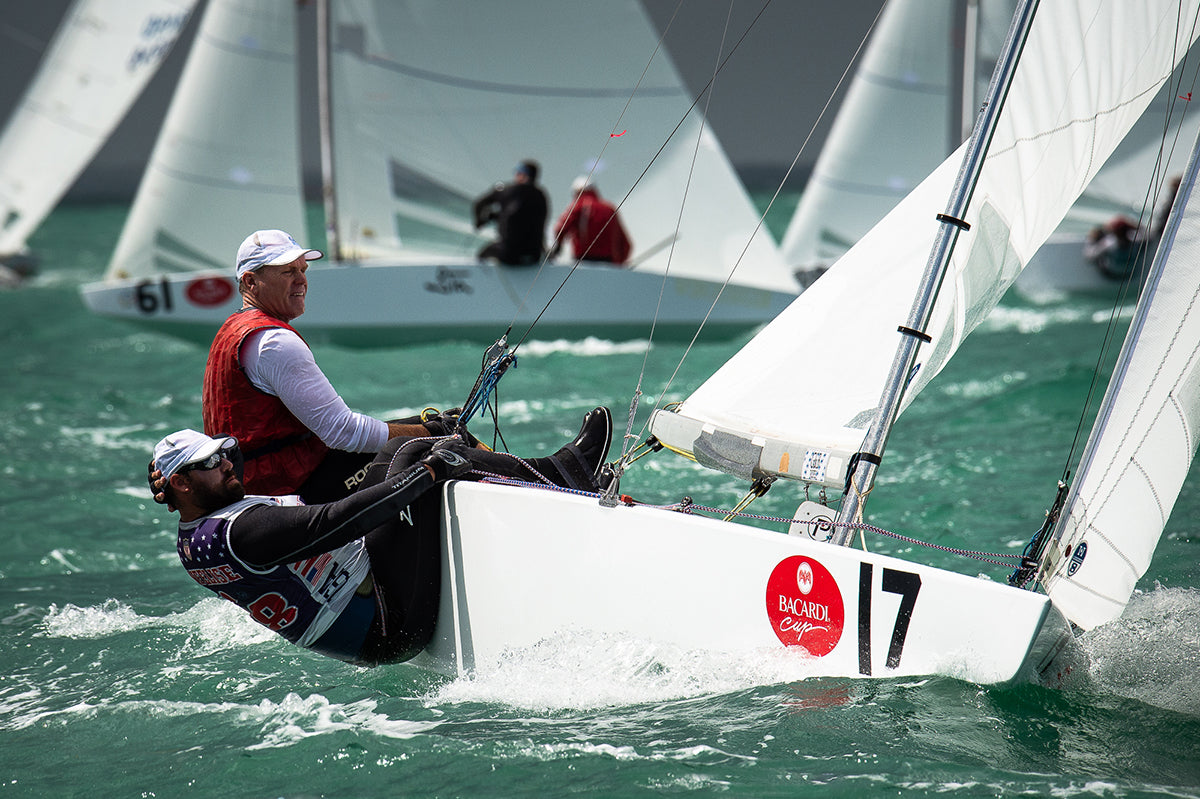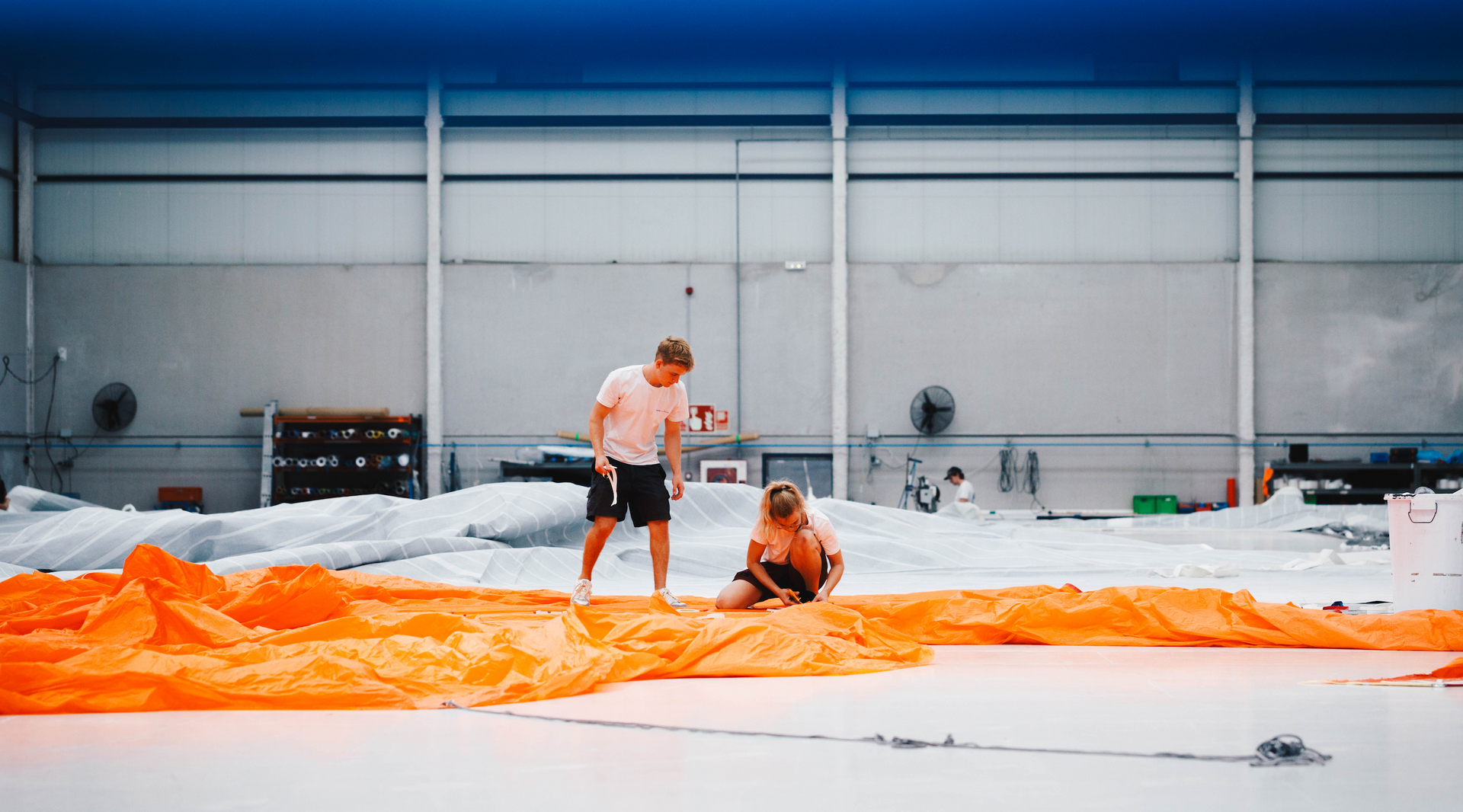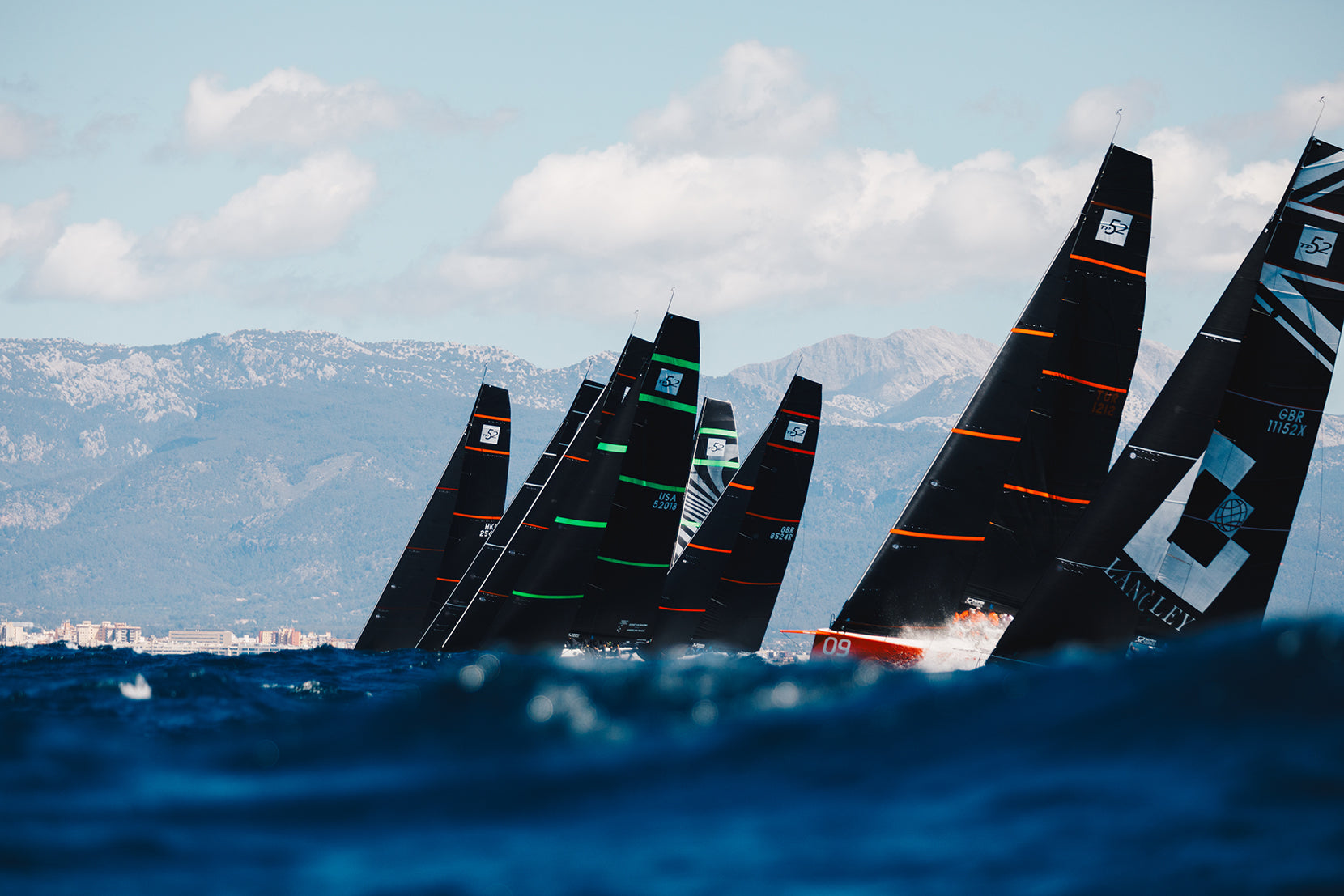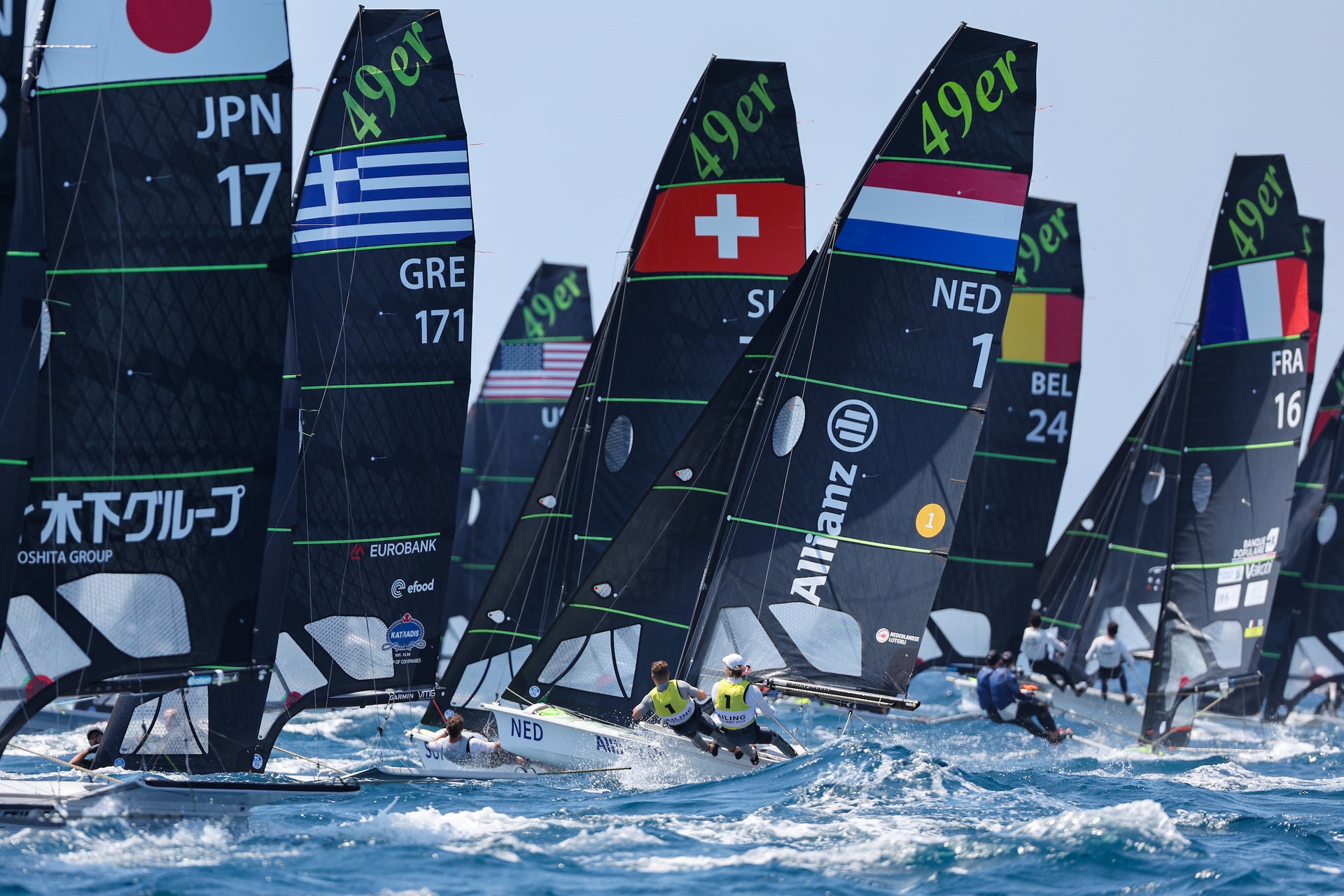STAR SAIL DESIGN: R&D
STAR SAIL DESIGN: R&D
Upgraded 2019 Sail Inventory Explained By Eric Doyle And Mike Marshall

North Sails has been making fast Star sails since the very beginning. “The first sail Lowell North made, was a Star sail,” 1999 Star World Champion Eric Doyle points out. “And we’ve been refining them ever since.”
As the Star Class Leader for North Sails, Eric devoted the past two years to figuring out how to make this hundred-year-old class go just a little bit faster. Recently he proved that was time well spent with a decisive win at the 2019 Bacardi Cup. “We were really pleased with our performance throughout the wind range,” Eric explains, adding that he used the new M-25 mainsail for the entire event.
“The mast section is quite small and the sail area is quite big,” he continues. “So small changes make a big difference.
“It’s such a great platform for learning what changes you can make and the effects they have on sail shape and boat speed.”
Matching Sails to Rig and Smoothing
After a few years away from the class to work with the Oracle America’s Cup team, Eric says it took more than a year for him and his crew to get back up to speed with the top teams. “The rigs are stiffer now. So they’re a little easier to control and they don’t break as often.” That meant sails had to evolve as well. “We’ve revamped the whole product line this year.”
North Sails designer Mike Marshall adds some detail. “We matched the luff curve to the new masts and made a couple other little design tweaks here and there to really up the range of the sails, and fix some issues they were having when they would trim too hard,” Mike says. “Certain areas would be closing, so we made a couple of tweaks. And then we made some panel layout changes.”
In addition to making the sails fit on a stiffer mast section, another goal was to reduce any bumps. “Aesthetically smooth sails are key,” Mike says. “So we made a couple of changes, especially in the jibs and some detailing. Such minor things that can really cause a problem, it’s impressive sometimes how small it can be. We worked hard on that.” Also, improvements in technology have made it possible for designers to reduce weight without threatening the sail’s structural integrity. “What if we don’t like the weight of the aluminum headboard?” Mike asks. “Can we put something in there that’s going to give the stiffening but be a quarter of the weight? How do we make that smooth? You’re making the sail as light as you can, without compromising the loaded structure.” And as Eric and Mike agree, all those little changes add up to a faster Star sail.
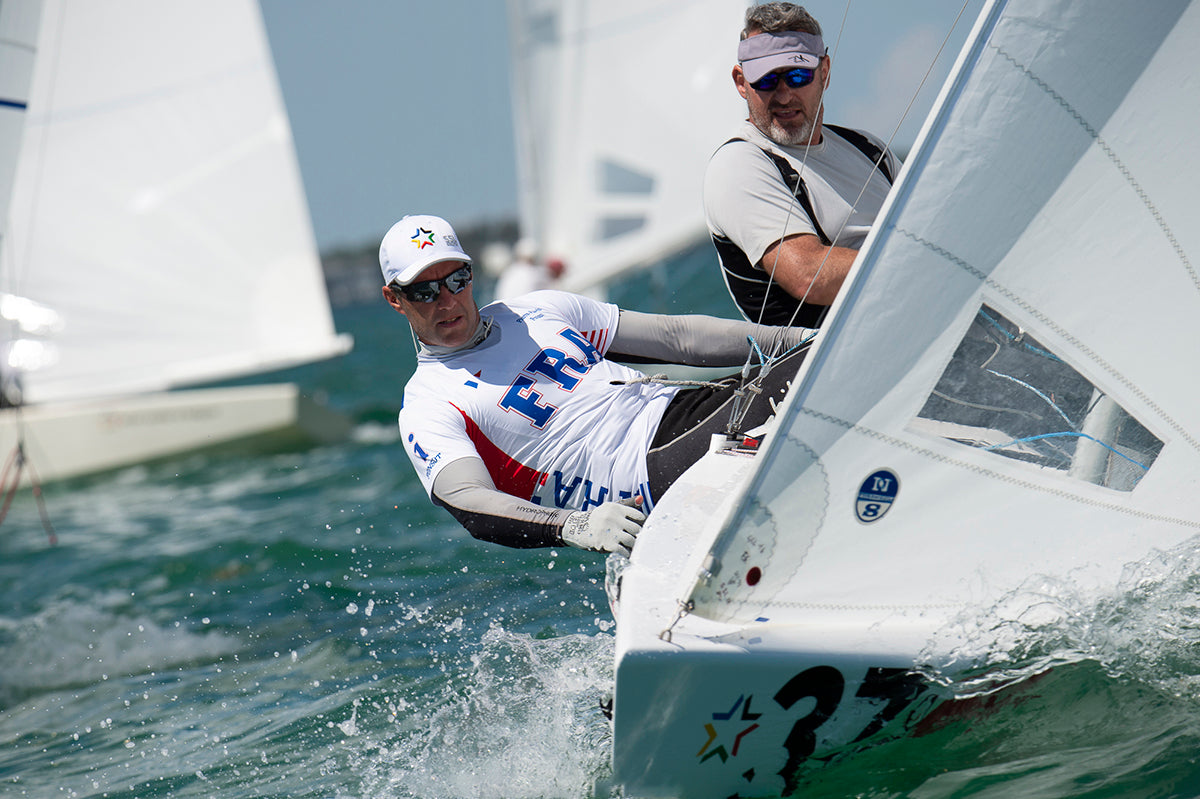
Sail Testing
Sail testing done right—two well-matched boats, and a coach—is time-consuming, but it’s the only way to quantify improvement. First, says Eric;
“We have to do a lot of sailing to get as fast as the top guys and feel comfortable throughout the wind range, and with our settings. Then we have to identify our weak spots, and what we think the problem and/or solution is.”
An example is the stiff mast he was using when he stepped back into the Star two years ago. “We were pretty fast in the medium conditions, but when it got really windy, we struggled to make the sail flat enough. So, we analyzed the sails with a sail digitizing program, and compared them to what we had in the past. Then we changed the sail and went back out to find the same conditions.
“We had a big problem in really light air,” Eric continues, “and we really weren’t sure if it was the mast or the sails. At the 2019 Midwinters we changed both at the same time, something we normally don’t do, but we had a pretty good idea of what was needed. The sail was a little bit knuckle forward, so we reduced the luff curve a bit. The pictures and the coaching showed us that was the thing to do.” The result? “We were much faster in lighter air.”
Eric feels lucky to have John McCausland as a tuning partner. “He’s a great sailor, former world champion. We’ve been tuning together for 20 years. I don’t like to leave the dock without him, because we’re super-efficient. We know how to set up, and make changes, and wait for each other. And he shares everything openly, so it’s really great.”

Mainsail Design Details
The M-25 mainsail
“Our standard M-25 main, we had to get it to fit the stiffer mast and not give away too much on older masts that are more flexible. It is slightly flatter then the previous M-16 model, and it has a little tighter mid-leech with a bit more twist in the top. It’s a good all-around mainsail for the entire wind range.” The M-25 is the only mainsail Eric used to win the 2019 Bacardi Cup, though it’s not the only model available.
For the lighter winds of North America, there’s a North mainsail M0-5, made entirely of minimum weight cloth. “It’s a little more powerful to help get the crew over the side a little quicker, which is key in the Star. If you can get the crew over, you’re going pretty fast.”
Jib Design Details
All of the redesigned jibs are radial, which improves both longevity and wind range. “The J-115 Full Radial Jib really excels in flatter water,” Eric says, adding that it was their choice for most days at the Bacardi Cup. “It can sheet really hard for maximum pointing.”
On one of the light days in Miami Eric used the J-6 Wave Jib, which is better in bumpy water. “It powered through the big fleet chop with ease.” He recommends the J-6 for West Coast sailing, where they often get swell overlaid with chop. “It has more power down low and a wider entry angle to help make a wider groove when you’ve got to steer around the waves.”
There’s also a J-2, “for one of those days when you’re wondering if they’re going to send you out or not in 20 or 25 knots. It’s heavier cloth and full radial construction, and it’s quite fast. It’s really nice when you don’t want to destroy your light jib-which you can do pretty easily on a big breeze day.”
North has been winning Star world championships since 1957, so making already fast designs even faster takes a lot of effort. “We’ve improved what we felt was already pretty good,” Eric says. “It’s a lot of time and testing. But I think we made some nice steps this year.”
